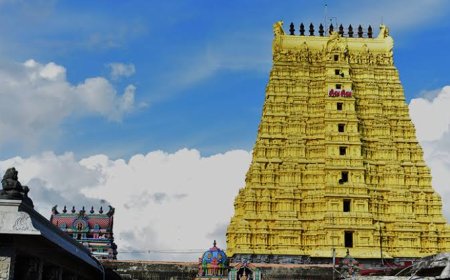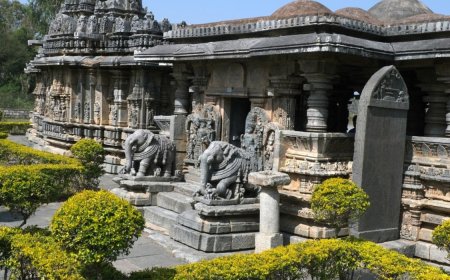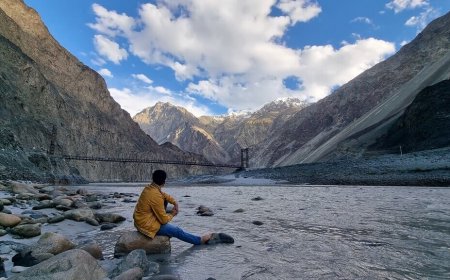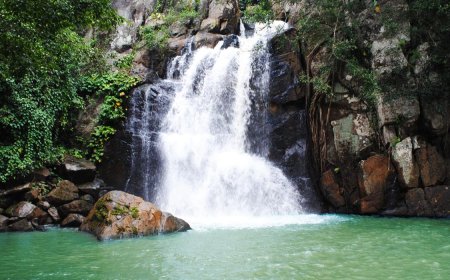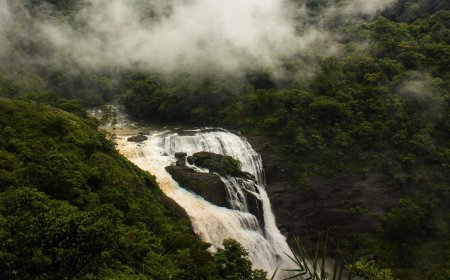How To Avoid Getting Stuck Up In Annapurna’s Dangerous Weather
Learn how to avoid getting stuck in Annapurna’s unpredictable and dangerous weather during your trek. Discover the best seasons to hike, essential gear, real-time weather checks, and safety tips to stay prepared and safe on the Annapurna Sanctuary and Circuit trails.
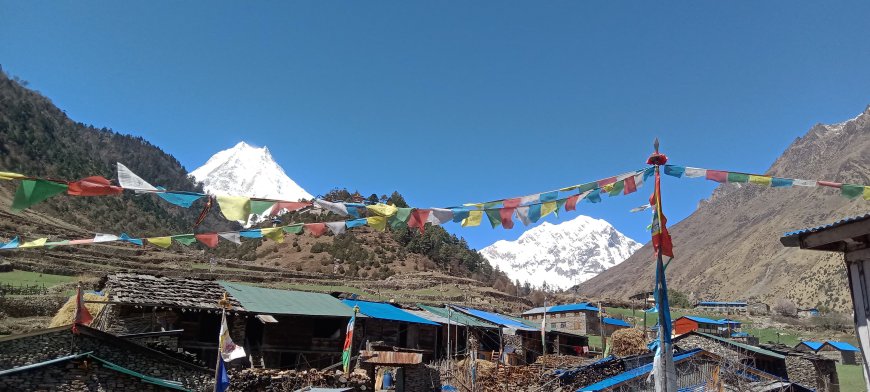
How To Avoid Getting Stuck Up In Annapurnas Dangerous Weather
The Annapurna region is stunning, but its weather can be a bit wild and sometimes risky. To avoid getting caught in tough conditions during the Annapurna Sanctuary Trek, it's important to plan wisely and stay aware of real-time updates.
Start by picking the right time to go. Spring (March to May) and autumn (September to November) are the best months for trekking with clearer skies and mild weather. It's best to steer clear of the monsoon (June to August) and deep winter (December to February) since landslides and heavy snow can make trails unsafe and visibility poor.
Make it a habit to check daily weather forecasts, especially if you're climbing above 2,500 meters. Most teahouses share weather updates, and there are trekking apps that provide real-time mountain forecasts. Being flexible with your plans is important tooyou might need to adjust your hike if the weather takes a turn for the worse.
Don't forget to pack the right gear. Waterproof jackets, warm clothing, good hiking boots, and a solid rain cover for your backpack are essentials. It's also wise to carry some extra food, water, and a power bank just in case you find yourself stuck in a storm for a while.
Try not to trek late in the day when the weather can change quickly. Starting early lets you reach your spot before any afternoon storms roll in. Pay attention to local adviceguides and villagers often have a better sense of what's coming than weather apps do.
Lastly, keep an eye out for signs that the weather is turning. Sudden drops in temperature, fast-moving clouds, or stronger winds are all indicators. If you're unsure, its better to take a break, wait it out, or head back. It can be risky to get stuck up high because of bad weather, but with good preparation and caution, you can explore the beauty of the Annapurna region safely.
Understand the Weather Seasons
Knowing how the seasons work in Annapurna is key to a safe trek. Spring (March to May) and fall (September to November) are the best times to go, with clear skies, little rain, and comfortable temperatures. The monsoon (June to August) brings heavy rain, leeches, and slippery trails, while winter (December to February) has snow, ice, and blocked paths. Weather can change quickly, especially at high elevations, so understanding each season helps you pack the right gear and plan your trip wisely. Trekking at the right time can lower the chances of getting stuck or facing dangerous storms, so always check the forecast.
Avoid Trekking in the Monsoon and Harsh Winter
Trekking during monsoon or deep winter poses serious risks in Annapurna. From June to August, heavy rains can cause landslides, swollen rivers, and poor visibility on the trails. Winter, especially above 3,500 meters from December to February, brings heavy snow, very cold temperatures, and risks of avalanches. Trekking during these times increases your chances of needing help or getting stuck. If you must trek during these months, stick to lower trails and stay informed about the conditions. Planning your hikes for spring or fall will give you safer paths and the best views.
Check Weather Forecasts Often
Weather in the Himalayas can change quickly, so its important to check forecasts every day. Use reliable sources like Mountain Forecast, Windy, or weather apps that give mountain-specific data. Many teahouses provide updates for the upcoming day, and guides often have access to the latest weather info. Even if it starts sunny, rain or snow can hit in the afternoon at higher elevations. Checking forecasts helps you decide when to rest or change plans. Dont ignore warningsstorms can catch trekkers unprepared. Make it a routine to check the weather each morning and evening, which can help you avoid unnecessary risks.
Start Trekking Early
One of the best ways to deal with the weather is to start your trek early in the morning. Mornings usually have clear skies and more stable conditions, while afternoons can bring clouds and sudden rain. By hitting the trail around 6 or 7 AM, you give yourself enough time to reach your destination safely before the weather turns. Starting early also means better visibility, fewer crowds, and more time to deal with any unexpected delays. Finishing your trek early allows you to rest and prepare for the next day, which reduces your chances of facing bad weather.
Plan Buffer Days in Your Itinerary
Adding 1-2 buffer days to your trek is a smart way to deal with the unpredictable mountain weather. Unexpected storms or other issues can slow you down. Having extra days gives you some leeway and helps with acclimatization to avoid altitude sickness. If everything goes smoothly, you can use those days to relax or explore nearby areas. When trekkers rush due to tight schedules, they often make risky choices in bad weather. A flexible plan that includes rest days helps you stay calm and ready to adapt if needed.
Listen to Local Guides and Teahouse Owners
Local guides and teahouse owners have a deep understanding of the weather and trail conditions in Annapurna. Their everyday experiences provide insights that apps might not have. They can often sense incoming weather changes based on slight wind or cloud shifts. If they suggest postponing your trek or taking a different route, it's wise to listen. They know how quickly conditions can become dangerous. Many teahouses get their weather updates via radio, so trusting their knowledge helps you stay safe and make informed decisions.
Carry an Emergency Weather Kit
Having a weather-specific emergency kit is essential for your trek. It should include things like a thermal blanket, waterproof clothing, a flashlight, extra batteries, a whistle, energy snacks, a first aid kit, and a power bank. Also, pack a rain poncho, extra socks, and a backup map or GPS. If you get stuck in a storm, these items can keep you warm, dry, and safe while you wait for help or for the weather to clear. A well-prepared kit can make a big difference between being uncomfortable and being in a dangerous situation.
Stay Updated with a Satellite Phone or Apps
In remote parts of Annapurna, phone service can be spotty or nonexistent. Bringing a satellite phone, walkie-talkie, or GPS device with weather updates helps keep you informed. Apps like Garmin inReach or WeatherLive can give you real-time weather info, even when you're out of service. They can also help you send messages in case youre caught in a storm or need assistance. While these devices can be pricey, having one can ease your mind during risky situations. If you dont have a satellite device, check daily weather at teahouses or with your guide.
Know Where Safe Shelters Are
Its important to know where the nearest shelters or teahouses are each day. Before your trek, familiarize yourself with your route and identify safe rest points along the way. Reaching shelter quickly can be crucial during sudden storms. Most routes to Annapurna Base Camp have teahouses within a few hours of each other. If you find yourself caught in bad weather, aim for the closest shelter instead of pushing ahead. Guides can also show you other hidden shelters or caves nearby. Being informed helps you react calmly and safely when the weather turns.
Have an Emergency Exit Plan
Always have a backup plan for severe weather on the Annapurna trail. Know the nearest exit routes or roads where you can make a quick descent or get transportation. Keep emergency contact numbers handy, including local rescue services and your embassy. If youre trekking alone, tell someone your daily plan. In extreme situations, heading to a lower altitude or delaying your trek might be the safest choice. Its wise to have travel insurance that covers weather-related issues and emergency evacuations. Being prepared helps you stay calm and make better decisions if things go wrong.
How to Get Ready for the Annapurna Circuit?
Getting ready for the Annapurna Circuit is all about building up your fitness, preparing your mind, and making smart choices. Start training a couple of months in advance. Focus on cardio exercises like hiking, running, or biking, plus some strength workouts and long walks with a backpack. Familiarize yourself with the route, distances, altitude changes, and the best times to go (spring and autumn). Pack the essentialslayers of clothing, good boots, a first aid kit, and enough water. Make sure to get your TIMS card and ACAP permit before you leave. It's wise to plan a few extra days for acclimatization and possible weather delays. Most importantly, mentally gear up for long days and the challenges that come with altitude and changes in the trail. The better you prepare, the safer and more enjoyable your trip will be.
Can a Beginner Trek Annapurna?
If you mean trekking the Annapurna Circuit or Base Camp, then yesa beginner can do it with the right prep. But climbing Mount Annapurna I (8,091m) is super risky and not something beginners should attempt; its one of the most dangerous peaks in the world. Trekking the Annapurna Circuit is tough but doable for fit newcomers. Youll need to be in good shape, take your time to acclimatize, and plan well. Its a good idea to build in extra rest days and think about hiring a guide or porter for safety. With determination and proper prep, the Annapurna trek can be an awesome first Himalayan experience.
Whats the Toughest Part of Annapurna?
The toughest part of the Annapurna Circuit is crossing Thorong La Pass, which is at 5,416 meters (17,769 feet). Its the highest point of the trek and can be a challenge due to thin air, freezing weather, and steep early-morning climbs. Breathing can get hard up there, and the weather can change on a dime. Youll want to start early (usually around 4 AM) to dodge strong winds and snow. Good acclimatization, pacing yourself, and staying hydrated are super important to make it safely across the pass. Even with the difficulties, many trekkers say Thorong La is the most rewarding part of the trek because of the views and the sense of accomplishment.
What Is Altitude Sickness Like on the Annapurna Circuit?
Altitude sickness, or Acute Mountain Sickness (AMS), is a big concern on the Annapurna Circuit and ABC trek, especially above 3,000 meters. You might experience headaches, dizziness, nausea, loss of appetite, and feeling really tired. If you dont pay attention, AMS can lead to more serious issues like High Altitude Pulmonary Edema (HAPE) or High Altitude Cerebral Edema (HACE), both of which are dangerous. Thorong La Pass, at 5,416 meters, is where AMS is most likely to hit. To steer clear of it, take your time ascending, include acclimatization days, drink plenty of water, and skip alcohol. If symptoms get worse, the best thing to do is to descend immediately. Knowing the signs of AMS and respecting them is crucial for a safe trek.






